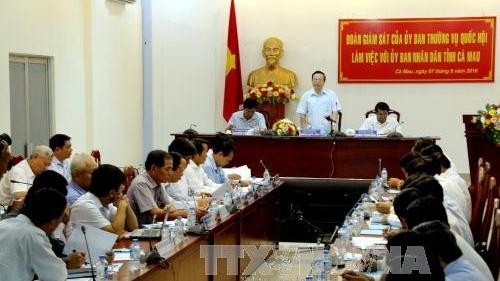During a working session with provincial leaders on September 7, National Assembly (NA) Vice Chairman Phung Quoc Hien praised the outstanding results Ca Mau has obtained in socio-economic development and the implementation of the national target programme on building new-style rural areas in the past few years.
According to a report released by the provincial People’s Committee, Ca Mau mobilised about VND24 trillion (US$1.1 billion) for building new-style rural areas from 2011-2015, as well as encouraged local people to help build infrastructure such as bridges and roads in rural areas. Thanks to these efforts, 17 out of 82 communes in the province have been recognised as new-style rural areas. From 2016-2020, Ca Mau aims to convert at least half of its communes into new-style rural areas.
NA Vice Chairman Hien also pointed to the shortcomings the province should overcome in the coming time, such as its lack of high-quality human resources, its small industrial sector and it’s the low competitiveness of its farm products.
More effort should also be directed to building clean coastal lands with full buffer forest coverage for climate change adaption and protection against rising sea levels, he noted.
Stressing the locale’s strengths and potential, the NA Vice Chairman asked Ca Mau to seek active and creative ways to boost its socio-economic development, focussing on removing difficulties for business and production activities, especially in agriculture and seafood processing, as well as implementing synchronised measures to stabilise the market.
Ca Mau should focus on improving its investment environment and the quality and efficiency of investment growth, he said, urging the province to attract investment to develop its industries, particularly processing industries using locally available materials, and to utilise all resources at its disposal to successfully implement its 2016 socio-economic development goals.
















